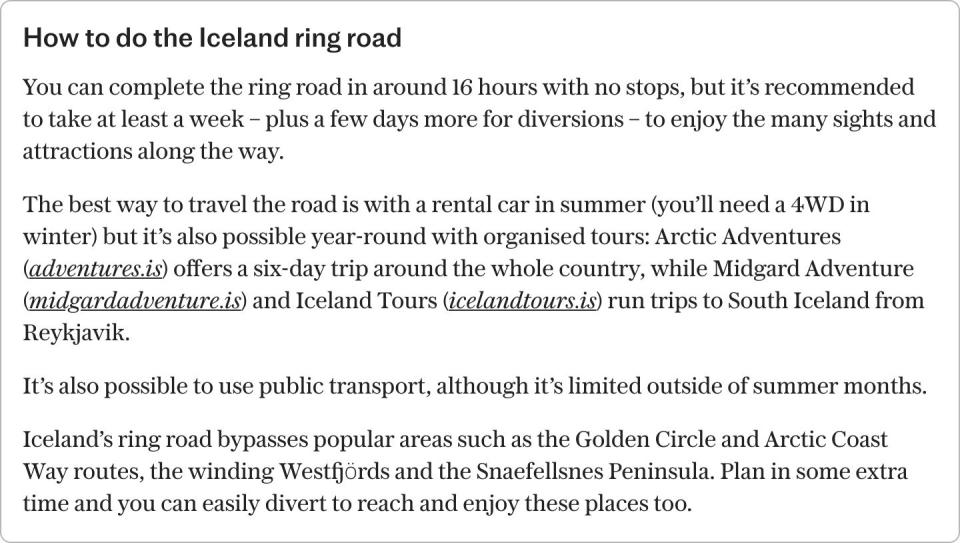Iceland’s Ring Road, officially called Route 1, is a 1,320-kilometer scenic paradise for road trippers looking to explore the country beyond Reykjavik.
The route runs along the borders of the Scandinavian country and offers an uninterrupted series of breathtaking natural attractions: waterfalls, glaciers, lagoons, black sand beaches, basalt cliffs and volcanoes.
The route also passes through charming towns and fishing villages and a range of cultural and gastronomic highlights. Starting and ending in Reykjavik and heading clockwise along the Ring Road, here are 13 stops not to be missed.
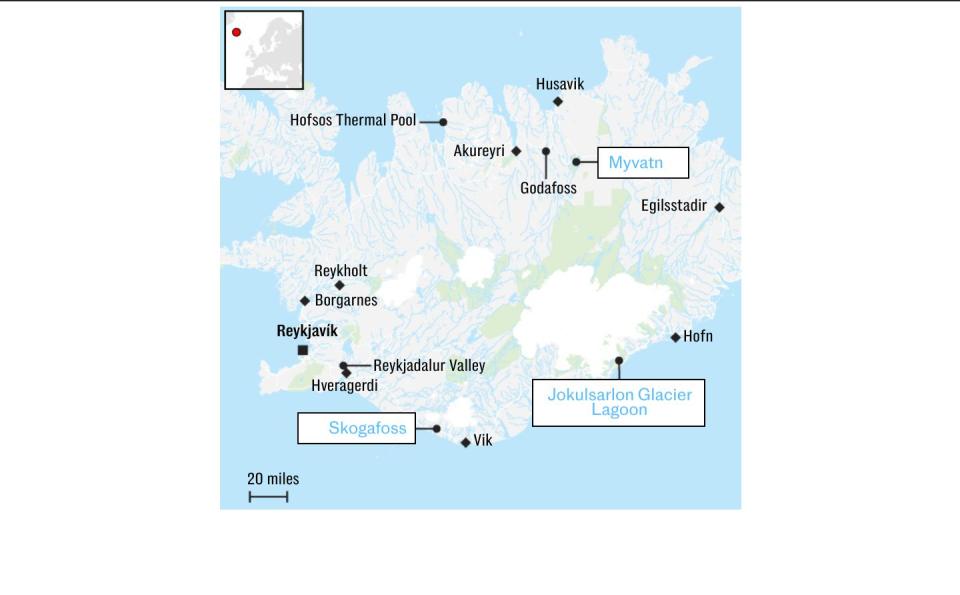
Reykjavik
If you’ve never been to Iceland’s capital, spend a day or two there to get used to its unique, laid-back urban fishing village vibe and explore its many museums, galleries, restaurants and nightlife.
The The Making of a Nation: Heritage and History in Iceland at the National Museum of Iceland is a great place for a historical overview, while foodies can find plenty of local and international dishes at Hlemmur Food Hall, housed in a former bus station. Oh, and don’t leave without trying the heavenly baked goods at Sandholt.
Borgarnes (and Reykholt)
The small, pleasant town of Borgarnes serves as a gateway to North and West Iceland and holds a special place in the medieval sagas of Iceland.
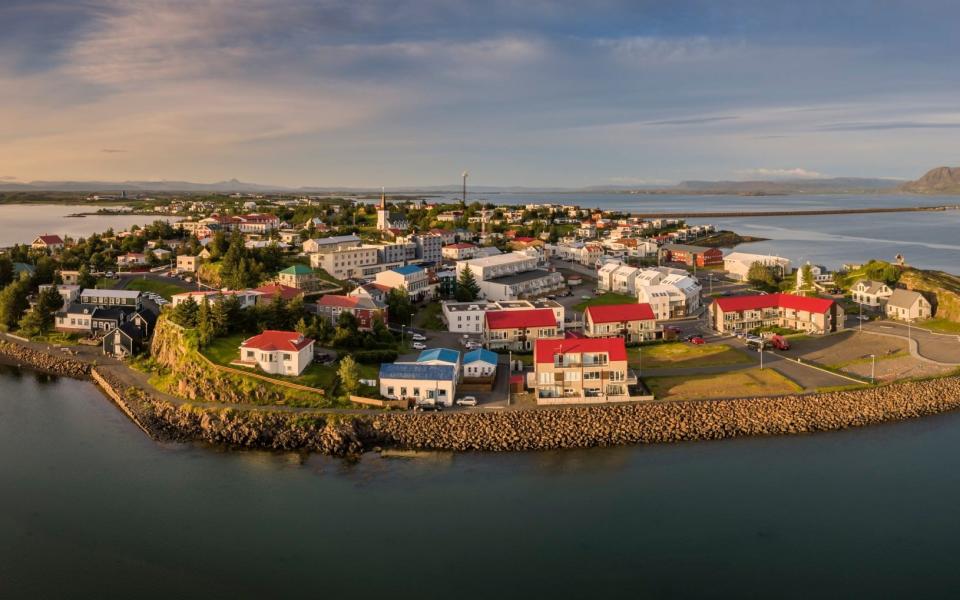

In the Settlement Centre you will find information about the Viking settlement in the region and about Egil’s Saga, which is set in and around Borgarnes. There is also a nice restaurant.
A 30-minute drive will take you to Reykholt, the former home of Snorri Sturluson, one of Iceland’s most famous writers and poets. It is also home to the Krauma geothermal spa, Europe’s most powerful hot spring, Deildartunghver, and not far from the Hraunfossar and Barnafoss waterfalls. Borgarnes is also a great base for exploring the surrounding Snaefellsnes peninsula.
Hofsós Thermal Bath
You can break up the three-hour drive from Borgarnes to Akureyri by heading off the ring road and taking a dip in this beautiful thermal pool.
Designed by the same architect as the Blue Lagoon, it is built on a hill above the sea and offers an infinity pool overlooking the fjord and Drangey Island.
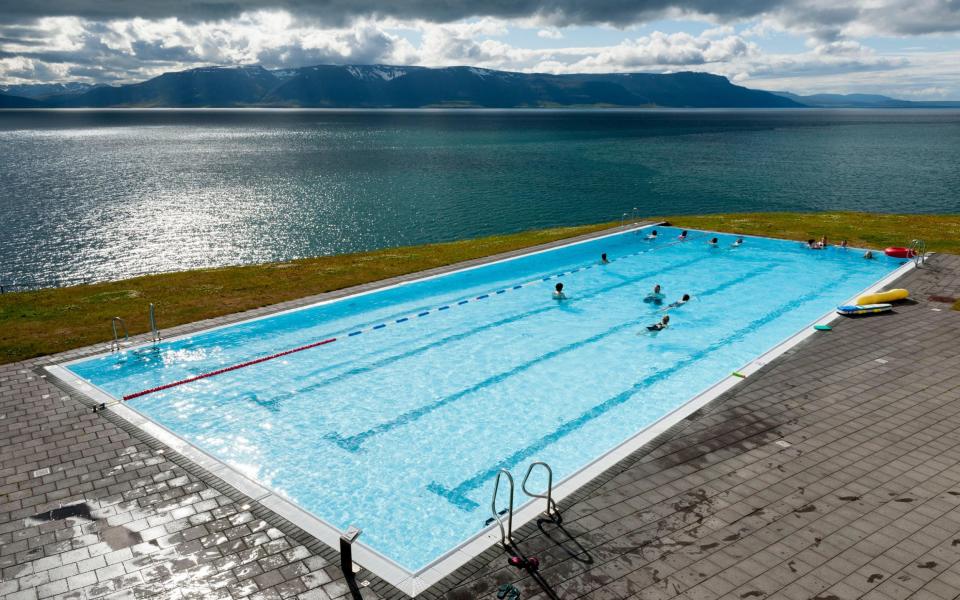

Directly below the pool lie the basalt formations of Staðarbjargavík, which according to local legend was once the capital of the local elven population.
Akureyri
Iceland’s second largest city, Akureyri, is picturesquely nestled at the bottom of the Eyjafjörður fjord. It’s a fun collection of churches, bars, art galleries and museums, as well as botanical gardens, and there are several hiking trails in and around the city. A selection of good hotels makes it a good option for an overnight stay.
For dinner, Rub23 serves excellent Icelandic fish, lamb and beef dishes and some of the country’s best sushi, served with the restaurant’s locally grown wasabi.
Godafoss
Yes, there are quite a few waterfalls along the Ring Road, but it would be a shame to miss the raw spectacle of Godafoss.
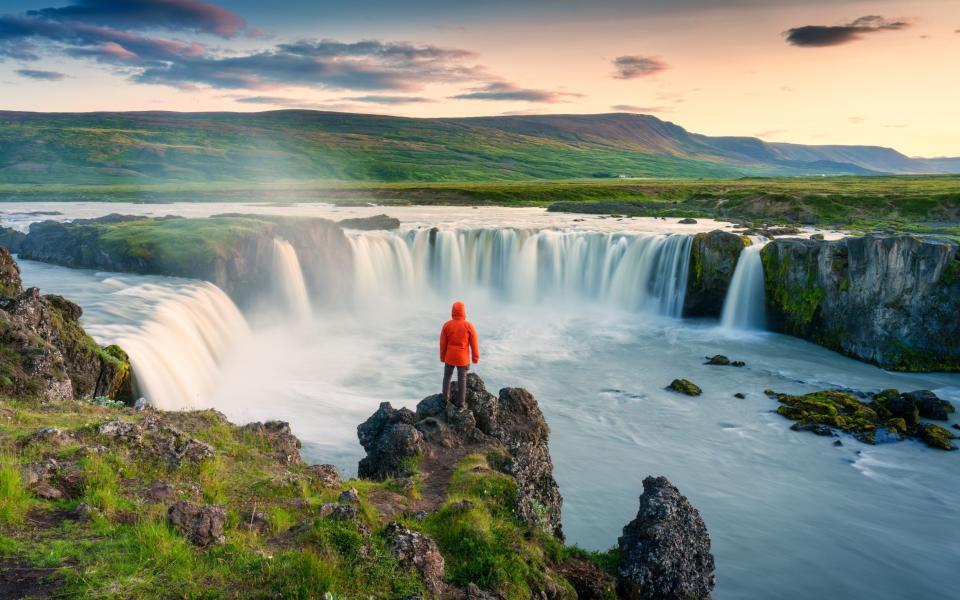

The name, which can be dramatically translated as “Waterfall of the Gods”, is said to date back to around 1000 AD – when Icelanders converted to Christianity and legal scholar Þorgeir Ljósvetningagoði threw his pagan idols into the waterfall.
Twelve metres high and thirty metres wide, the roar of the winding waterfalls drowns out everything around it. A footpath provides access and different perspectives.
Husavik
Another interesting 30-40 minute detour from the highway is the pretty harbour town of Húsavík. It is situated high up on the coast and is home to one of the best whale watching spots in Iceland, with some 23 species recorded.
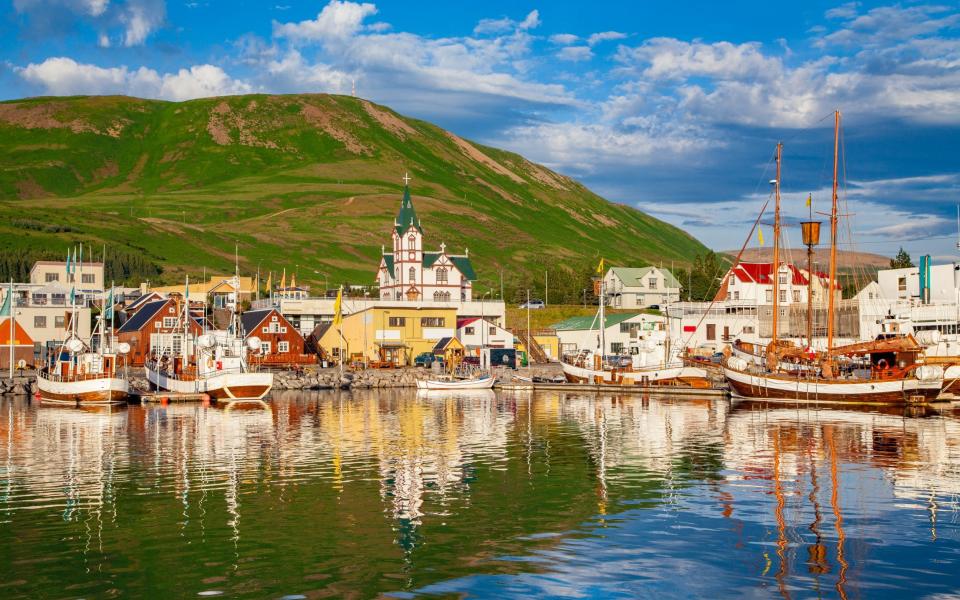

The most typical sea creatures you see in the local Skjálfandi Bay are the humpback whale, minke whale, white-beaked dolphin, harbour porpoise and blue whale. Several companies offer different tours to see them. The town also has thermal baths and a whale museum.
Myvatn
One of North Iceland’s scenic highlights, this otherworldly lake deserves a proper exploration. Rich in vegetation and birdlife, it’s possible to hike around the area to see the dramatic lava formations of Dimmuborgir, the Hverjfall crater – one of the world’s largest explosion craters, measuring two-thirds of a mile in diameter – and the Namaskard geothermal area.
Many of the trails are paved, but you can also take longer routes through the area. Reward yourself afterwards with a well-earned soak in the Myvatn Nature Baths and lunch or dinner at the farm restaurant Vogafjós, whose cuisine includes locally caught smoked trout, geothermally baked bread and dairy products from the farm’s cows.
Egilsstadir
East Iceland’s largest town, Egilsstaðir, is an ideal base for exploring the wider Eastfjords, but has plenty to offer of its own, from reindeer-spotting and practicing your axe-throwing skills to trekking in Iceland’s largest forest (Hallormsstaður) and swimming in the stylish Vok Baths, located in a local lake. An hour or so away at Hafnarhólmi in Borgarfjörður eystri on the coast, you can also enjoy puffin-spotting.
Court
The harbour town of Höfn is picturesque, peaceful – and famous for langoustines. It even has its own lobster festival every summer and some excellent restaurants where you can try the delicacy.
The best known is Pakkhús on the harbour (book in advance) which even does langoustine pizza. Höfn is also a gateway to and base for the majestic Vatnajökull National Park, whose glacial lakes and ice caves can be explored on foot or by guided jeep tours.
Jökulsárlón glacier lagoon
More glacial beauty can be found further along the Ring Road at the famous Jökulsárlón Glacier Lagoon. The lagoon is filled with huge chunks of ice that have broken off from the nearby Breiðamerkurjökull glacier; boat and Zodiac tours will get you up close to the chunks and the occasional seal that likes to rest or play on them.
Some of the ice blocks wash up on the nearby black sand beach, hence the nickname “Diamond Beach”. It is a beautiful spot for photos.
Vik
Vik, short for Vík í Mýrdal, is a picturesque little coastal village a little further out from the lagoon. It has its own entertaining lava show, but the main attractions here are the local black sand beach (Reynisfjara), with its striking basalt columns, the nearby Reynisdrangar basalt sea stacks, and Dyrhólaey, a nature reserve popular with puffins in abundance.
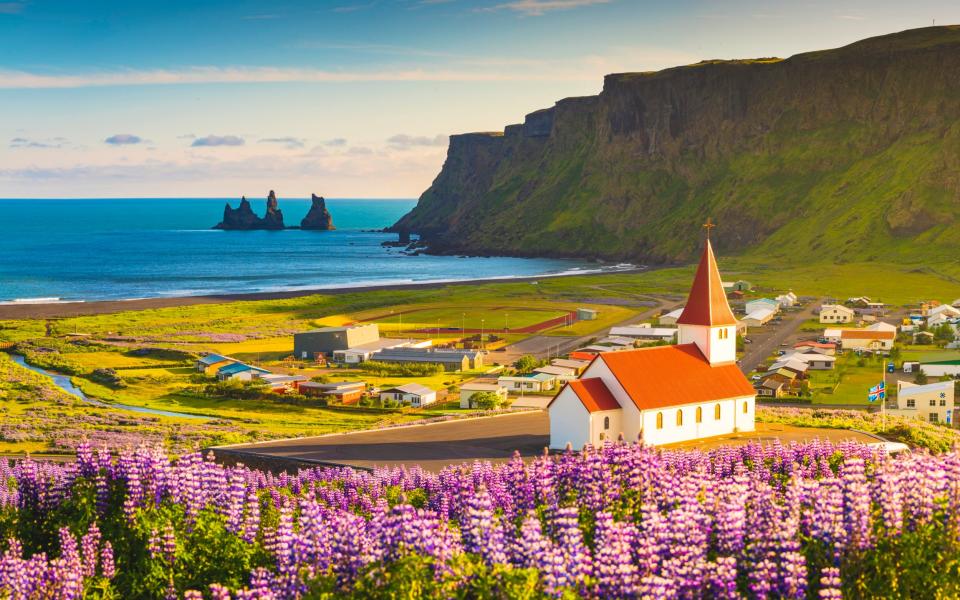

You can use Vik as a base to explore the Mýrdalsjökull glacier via snowmobiles, jeeps and snow scooters. To make things even more exciting, the glacier is home to Katla, Iceland’s most explosive volcano.
Skógafoss
Skógafoss is another waterfall that you must see. This waterfall drops about 60 meters and is 25 meters wide. It is located on the beautiful river Skoga. According to legend, there is a treasure hidden behind the waterfall, which was placed there by a Viking settler. However, you are more likely to find the rainbow that often appears here on sunny days.
You can walk right behind the waterfall to experience its grandeur better. A staircase takes you to the top of the waterfall and the longer Fimmvorduhals trail.
Hveragerdi and the Reykjadalur Valley
Before heading back to Reykjavik, turn off to Hveragerði. It is famous for its geothermal hot springs, greenhouses and the nearby Reykjadalur Valley.
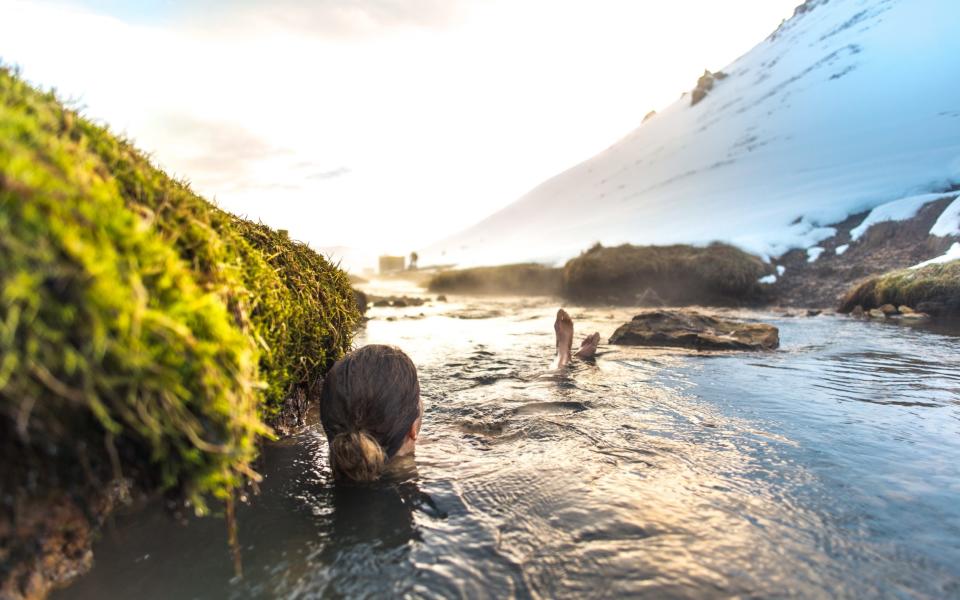

Reykjadalur means “valley of steam” and it is indeed dotted with hot springs and mud pools, as well as a geothermal river with boardwalks and rudimentary bathing facilities. There are also several hikes in the area and activities such as horse riding are also available.
